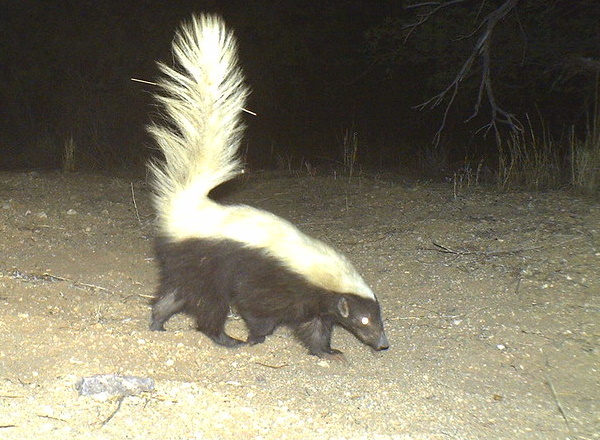Eastern Spotted Skunk
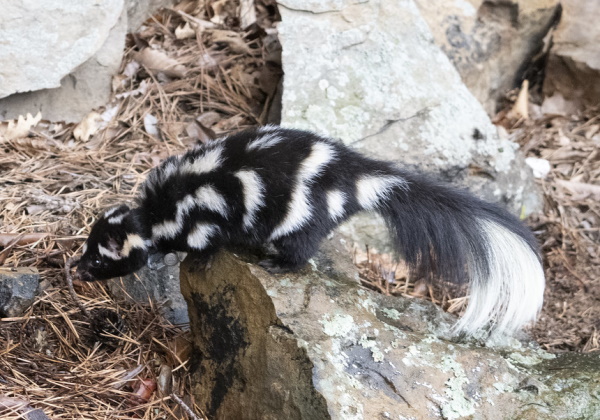
The Eastern Spotted Skunk (Spilogale putorius) is actually striped. The four to six long stripes that run down their bodies may be partially broken-up, giving them a spotted appearance. These slender skunks enjoy an expansive home range in the eastern half of the United States. Their secretive natures and nocturnal foraging habits ensure that sightings are rare, however. (image above via USFWS Midwest Region)
* Smell-tastic Skunk Fact: Skunk spray stinks, as everyone knows, but the awful aroma is as bad as it gets, right? Wrong! The sulfur-based thiol compounds that give skunk spray its foul odor are also extremely flammable. With that in mind, should circumstances force one to get in a skunk’s face, be sure a lit cigarette isn’t in yours.
Western Spotted Skunk
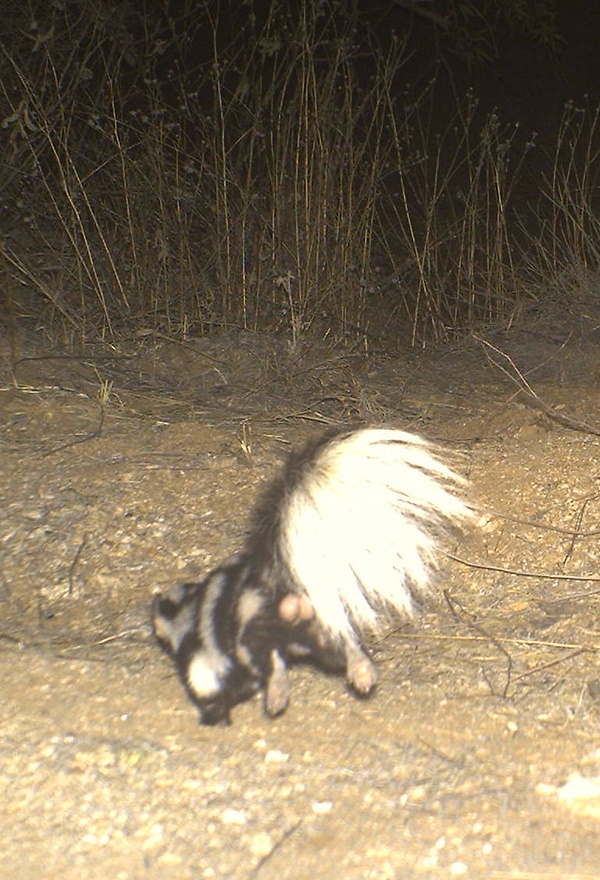
The Western Spotted Skunk (Spilogale gracilis) is commonly found from the foothills of the Rockies westward to the Pacific coast. This particular skunk species may be smaller than others but it punches above its weight: its spray contains an additional thiol compound that makes it even more pungent than its easterly and southerly spotted relatives. (image above via Saguaro National Park)
* Smell-tastic Skunk Fact: Skunks don’t hibernate in colder climes but they may sleep for several weeks in an underground den. Groups of unrelated female skunks – as many as 20 or so, in the case of the Western Spotted Skunk – may huddle together in a shared den. Male skunks, on the other hand, typically den alone. Sorry guys… try using deodorant maybe?
Andes Skunk
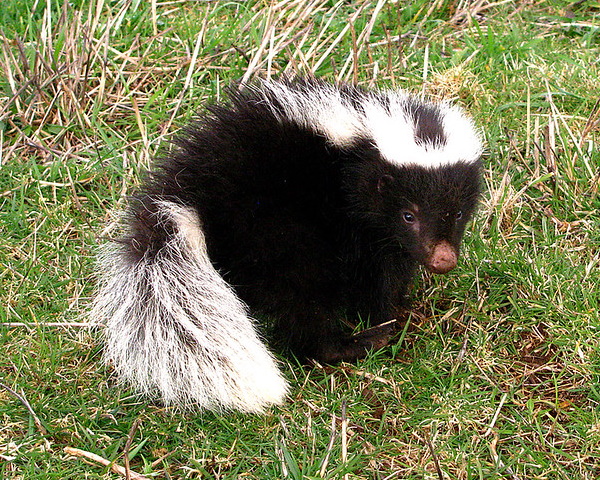
The Andes Skunk (Conepatus chinga) is also known as Molina’s Hog-nosed Skunk. This South American skunk species is found in temperate regions of Chile, Peru, Bolivia, Paraguay, northern Argentina, southern Brazil, and Uruguay. These average-sized skunks may roam at altitudes reaching 5,000 meters or 16,400 feet – they don’t call ’em “Andes Skunks” fer nuthin’! (image above via Inao)
* Smell-tastic Skunk Fact: In the southern United States, the term “polecat” is sometimes used to describe skunks. This is actually incorrect, since polecats and skunks are only distantly related. While true polecats are classified with ferrets and weasels, skunks are most closely related to the so-called “stink badger” native to Southeast Asia… because of course they are!
American Hog-nosed Skunk
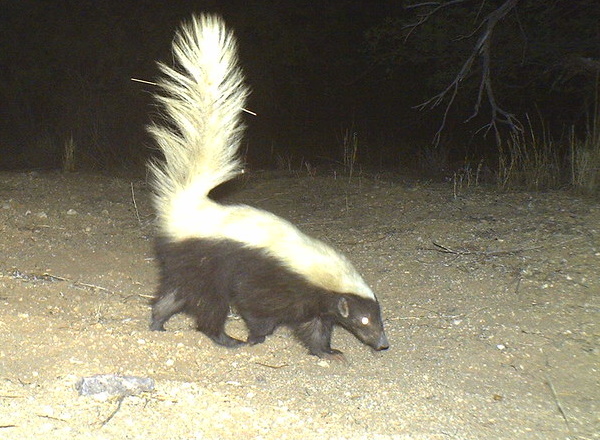
The American Hog-nosed Skunk (Conepatus leuconotus) is native to most regions of Mexico and more southerly portions of the American southwest. In Texas it is sometimes referred to as the “Rooter Skunk”. These skunks can be easily identified by their all-white backs and completely white tail.
The American Hog-nosed Skunk is also one of the largest skunks, growing up to 40 inches long and weighing as much as 10 pounds. Great, skunks are getting larger – can we call this one “Leon”? (image above via Saguaro National Park/Cuddeback Photos)
Even “nice” smells can irritate if they’re overexposed. We’re looking at you, Scent Season: 10 More Pumpkin Spice Foods, Snacks & Drinks!

